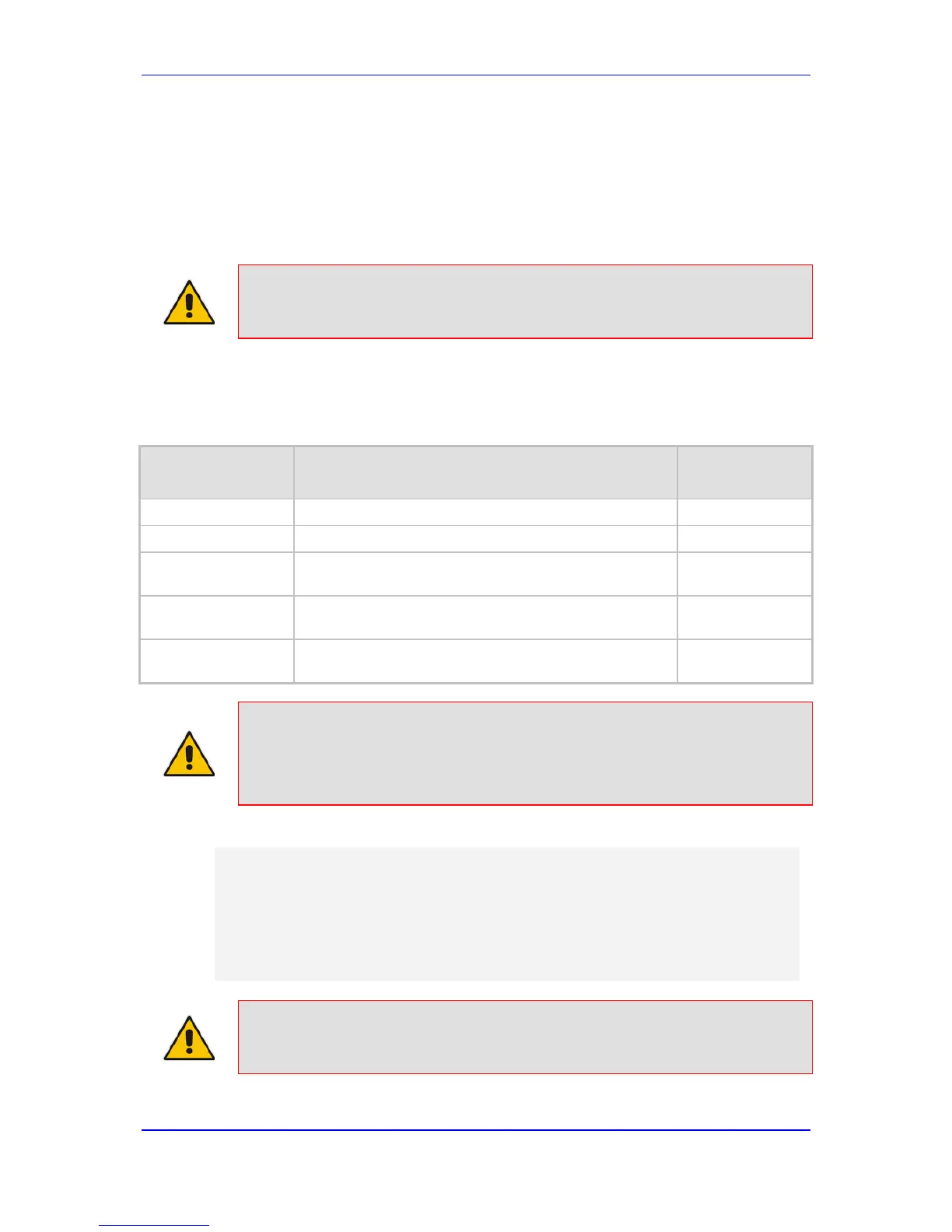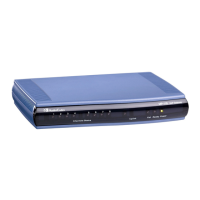31.1.4.1 User Information File for PBX Extensions and "Global" Numbers
The User Information file can be used to map PBX extensions, connected to the device, to
global IP numbers. In this context, a global phone number (alphanumerical) serves as a
routing identifier for calls in the 'IP world'. The PBX extension uses this mapping to emulate
the behavior of an IP phone.
Note: By default, the mapping mechanism is disabled and must be activated using
the parameter EnableUserInfoUsage.
The maximum size of the file is 10,800 bytes. Each line in the file represents a mapping
rule of a single PBX extension. Up to 100 rules can be configured. Each line includes five
items separated with commas. The items are described in the table below:
Table 31-2: User Information Items
Item Description Maximum Size
(Characters)
PBX extension #
The relevant PBX extension number. 10
Global phone #
The relevant global phone number. 20
Display name
A string that represents the PBX extensions for the
Caller ID.
30
Username
A string that represents the user name for SIP
registration.
40
Password
A string that represents the password for SIP
registration.
20
Note: For FXS ports, when the device is required to send a new request with the
Authorization header (for example, after receiving a SIP 401 reply), it uses the
user name and password from the Authentication table. To use the username
and password from the User Info file, change the parameter ‘Password’ from
its default value.
An example of a User Information file is shown in the figure below:
401 , 638001 , DN401 , UN401 , 401
402 , 638002 , DN402 , UN402 , 401
403 , 638003 , DN403 , UN403 , 401
404 , 638004 , DN404 , UN404 , 401
405 , 638005 , DN405 , UN405 , 401
406 , 638006 , DN406 , UN406 , 401
407 , 638007 , DN407 , UN407 , 401
408 , 638008 , DN408 , UN408 , 401
Note: The last line in the User Information file must end with a carriage return (i.e.,
by pressing the <Enter> key).

